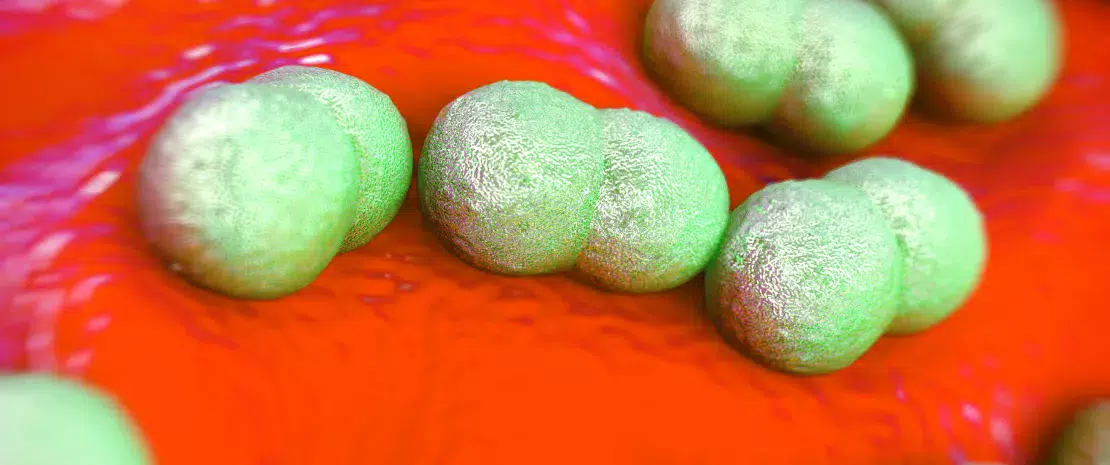Modulating the skin microbiota via topical applications
Preventing and treating dysbiosis without eliminating pathogens: novel therapeutic strategies aim to rebalance the skin microbiota directly via topical applications, or indirectly via oral solutions that modulate the gut ecosystem.
Sources
This article is based on scientific information
Sections

Staphylococcus epidermidis
About this article
The first clinical trials seem to support the use of topical applications to rebalance the skin microbiota. However, further trials are needed to confirm these results.
In general, there have been few clinical trials evaluating the topical application of probiotics in skin diseases.12 For acne, creams containing S. epidermidis or bacteriophages of C. acnes that preferentially target pathogenic strains have shown positive results.12 The application of R. mucosa in patients with atopic dermatitis may reduce lesion severity, the need to use topical steroids and the presence of S. aureus.28,29 The limited availability of microbial candidates on the skin has forced researchers to also use other sources of microorganisms. Derived from thermal spring water, Vitreoscilla filiformis may be beneficial in seborrheic dermatitis: one study reported a reduction in erythema, desquamation and pruritus by soothing the inflammation.12

In acne, Nitrosomonas eutropha decreases lesion severity12, while the topical use of bacterial products (E. faecalis enterocins) reduces lesions by 60% compared to controls.12 An alternative strategy corrects the dysbiosis by using sucrose to promote the growth of S. epidermidis over C. acnes.9 Scientific data are scant for skin cancer and non-existent for rosacea. In murine models of UV-related cancers, a molecule produced by S. epidermidis was shown to inhibit tumor proliferation.12,16





